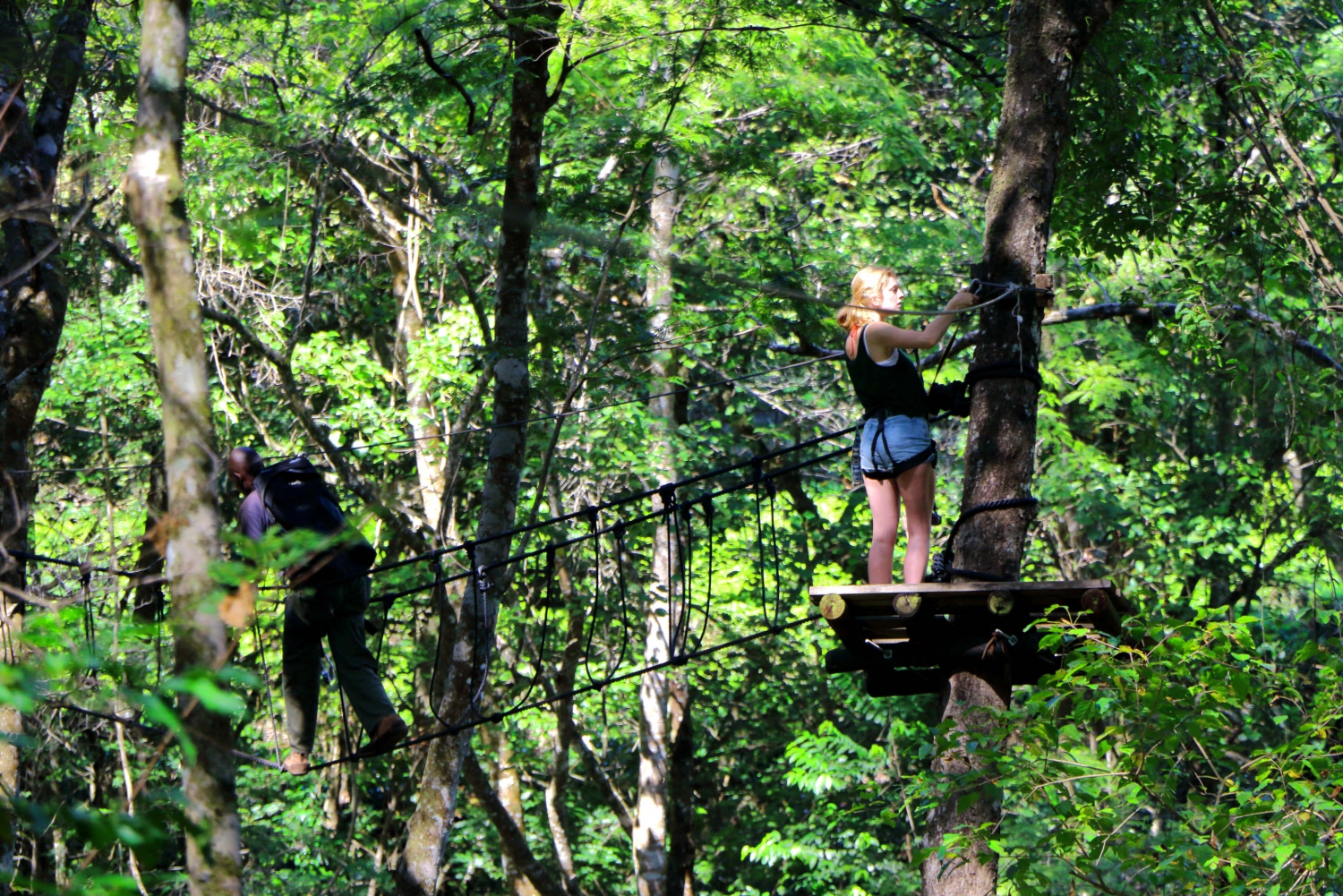
eBusiness Weekly

Tawanda Musarurwa
Who ever said skipping from tree to tree was a preserve for monkeys got it all wrong. Well, it probably was at some point in the history of this planet, but not anymore!
Welcome to the Aberfoyle Golf and Country Lodge’s “Tree Canopy Tour”.
Now, how does one go about describing all this monkey business?
Well, the tree canopy tour is basically constituted by a zip-line (aerial runway/aerial rope-slide), which consists of a pulley suspended on a cable usually made of stainless steel mounted on an incline.
It is designed to enable a user propelled by gravity to travel from the top to the bottom of the inclined cable by holding onto, or attaching to, the freely moving pulley.
Let’s just call it the art of gliding along steel cables, using a pulley and climbing harness.
Although zip-lines come in many forms, serving a varied range of purposes, here in Zimbabwe they are almost synonymous with upscale resorts that offer outdoor adventure camps, hence mostly for entertainment.
However, in mountainous areas such as the Honde Valley, they offer the visitor an opportunity to tour the jagged landscape and view the unique flora from an aerial perspective.
The Aberfoyle’s zip-line dubbed “Zimbabwe’s First Tree Canopy Tour” (well, my colleagues and I wouldn’t know much about that) can be a nerve-wrecking experience, suitable for adrenaline junkies and certainly not for those who suffer from nervous disposition.
The zip-line basically winds across the forest to a total length of 400 metres with its widest single run being 70 metres and the highest point from the ground being 20 metres.
If you think 20 metres is not too high off the ground then you probably haven’t been on zip-line before.
Let me help you out here a bit. Being strapped into your harness and hooked to the zip-line feels a little like a valediction moment. Typical of any experience of leaving behind what you are used to, I’m sure most people will find it out of character. I certainly top the list.
All that empty space beneath your feet (20 or so metres to a bushy and at times rocky surface) is slightly unnerving. If questions don’t pop into your head at this point, you’re probably brain dead. I was thinking, what if the line breaks? What if the opposite platform collapses? What if a snake falls on me?
At this point the side of my brain was trying to rationalise the decision to zip-line. I guess it lost that battle. There was, however, something visceral when my right-brain urged me to leap out over the rushing jungle below, and suddenly the world looked a whole lot different moving at high speed.
It takes a few seconds really and you’re on the next platform, eager and simultaneously anxious to move on to the next line.
The Tree Canopy Tour guide
The man with the unenviable job of convincing patrons that going through the zip-line is a ‘piece of cake’ is Wisdom Manyengavana.
He is very good at his job as he managed to convince me to try it out, especially as I am terrified of heights. It was an exhilarating experience, but I’ll be damned if I do it again! These are not just my sentiments.
Prior to me garnering sufficient bravado to try the zip-line, a chef with the Aberfoyle Lodge had said to me:
“I had been pestering my boss for a trial run on the zip-line, she eventually gave in and we all went as staff on a zip-line escapade … I won’t do it again!”
But I digress.
Originally from Rusape, Wisdom has lived in the Eastern Highlands for over 27 years and has been a tree canopy tour guide for the past six years, and he will not hesitate to point out that in that time (or ever) there have been no incidents on the zip-line.
“We always take time to check the ropes and bolts to ensure consistent safety standards,” he said.
Besides the zip-line Wisdom is also a wildlife and birding guide.
He talks about his qualifications:
“I have always been somebody interested in nature and when I came here I received a lot of training from local experts.”



